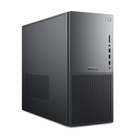- Microsoft has a plan to achieve greater ‘resilience’ with Windows 11
- That includes improvements to make drivers more reliable.
- There is also a new recovery feature, which is essentially an improved version of system restore.
Microsoft has outlined how it intends to improve Windows 11 for greater reliability with drivers, along with an interesting new recovery feature for the desktop operating system.
A lot of revelations were made in a lengthy Microsoft blog post about ‘innovations in Windows security and resiliency’ (as spotted by Bleeping Computer). This is primarily focused on the business world, but has ramifications for consumers as well.
There are some big moves with Windows 11 drivers that were previously applied to antivirus apps, but are now rolling out more broadly to all drivers.
As Microsoft says: “In short, we are raising the bar for driver signing and making it easier to create trusted drivers for Windows.”
This involves a series of new certification tests in driver signing (validation) to ensure better quality drivers for Windows 11 and a change from “code that runs in kernel mode in all driver classes” to standardized Windows drivers (which Microsoft is going to take more advantage of).
Microsoft makes it clear that third-party kernel-mode drivers will continue to be supported in Windows 11 and will not disappear in any way, noting: “Graphics drivers, for example, will continue to run in kernel mode for performance reasons.”
The blog post also discusses a number of moves for new PC recovery features, many of which relate solely to managing fleets of computers in a business environment, but there is one feature that also makes sense for consumer PCs.
This is an addition to Windows 11’s Quick Machine Recovery feature introduced earlier this year, which allows a PC to recover from a boot failure (or that’s the hope, anyway).
It’s called a “point-in-time restore” (PITR) and it rolls back a struggling PC to a previous state where the system was still working fine.
Microsoft explains: “This recovery action helps resolve a wide range of issues, including issues with updates, driver conflicts, and configuration errors.”
We’re told that PITR will be in testing with a preview version arriving for Windows 11 later this week, so we should stay tuned.
Analysis: Good things come to those who wait

If you’re thinking, “Isn’t PITR just a system restore with a different name?” Well, yes, more or less, and these features have the same end goal: to get your Windows 11 PC working again after a glitch that arose in the operating system is making your life miserable.
However, at this point, system restore is a rusty old skill that’s hard to rely on, and the idea with PITR is that it’s much more reliable and works faster. As Bleeping Computer highlights, the idea is to create a better, more feature-rich version of system restore, one that takes a snapshot of the entire system (for a later restore if necessary) that also includes local files and applications. If you remember, system restore only works with system files, not other files or software.
The problem is that system administrators manage PITR through Intune and, as noted, it is a commercial feature, but I don’t see why it wouldn’t have a broader rollout among Windows 11 users in the future. After all, system restore is very outdated (anyone use it anymore?) and really needs to be replaced.
Driver improvements are something everyone will clearly benefit from, as they will bring more stability to the hardware and software you have on your Windows 11 PC. That said, the transition to greater driver resiliency will be an ongoing process over the “next few years,” so don’t expect miracles to happen overnight.
However, it’s good to know that these improvements are in the works, along with other reliability improvements for Windows 11, such as proactive memory diagnostics. Hopefully, PITR will eventually be an option for consumers as well.

The best computers for all budgets
Follow TechRadar on Google News and add us as a preferred source to receive news, reviews and opinions from our experts in your feeds. Be sure to click the Follow button!
And of course you can also follow TechRadar on TikTok for news, reviews, unboxings in video form and receive regular updates from us on WhatsApp also.



